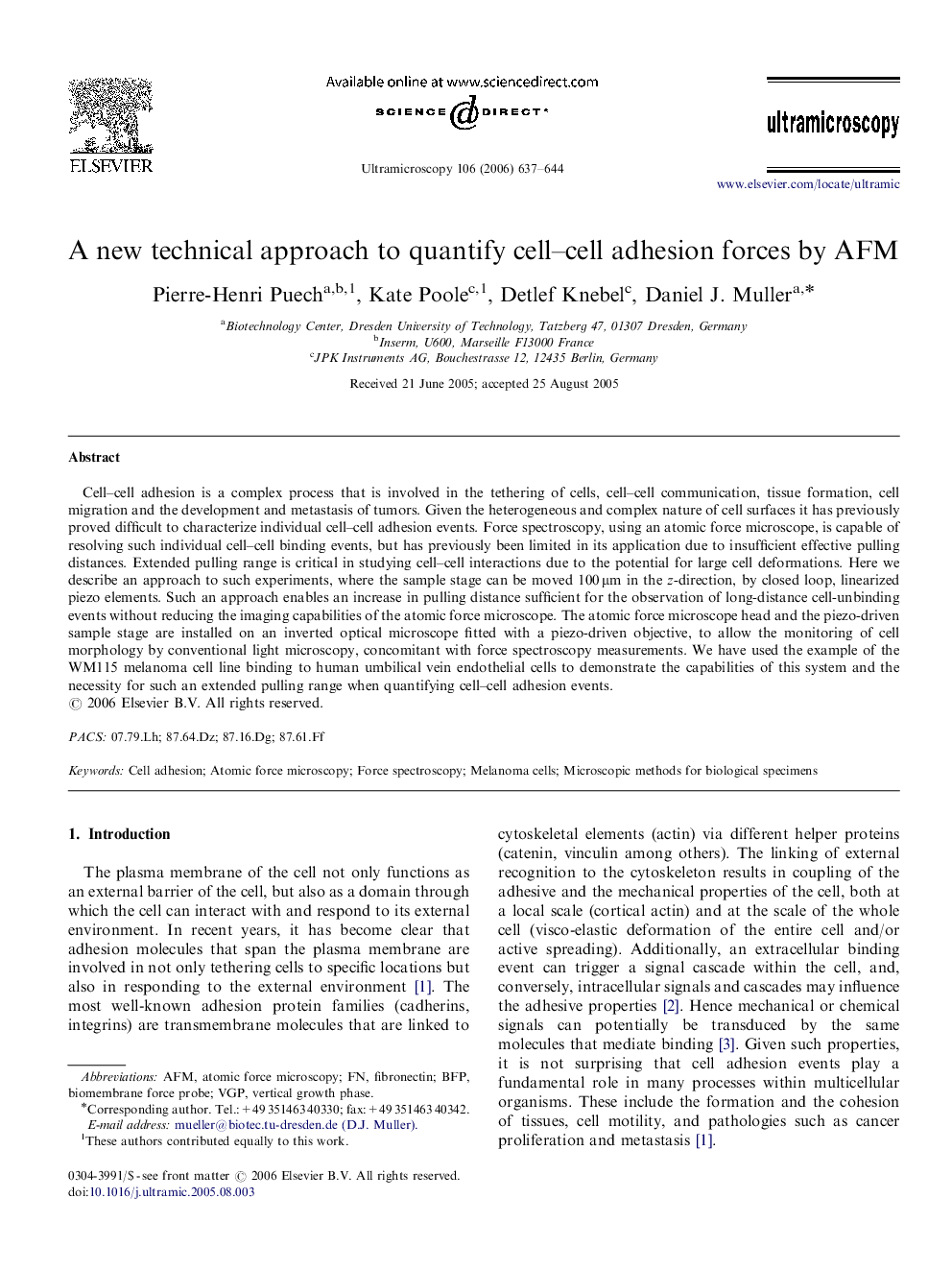| Article ID | Journal | Published Year | Pages | File Type |
|---|---|---|---|---|
| 1679135 | Ultramicroscopy | 2006 | 8 Pages |
Cell–cell adhesion is a complex process that is involved in the tethering of cells, cell–cell communication, tissue formation, cell migration and the development and metastasis of tumors. Given the heterogeneous and complex nature of cell surfaces it has previously proved difficult to characterize individual cell–cell adhesion events. Force spectroscopy, using an atomic force microscope, is capable of resolving such individual cell–cell binding events, but has previously been limited in its application due to insufficient effective pulling distances. Extended pulling range is critical in studying cell–cell interactions due to the potential for large cell deformations. Here we describe an approach to such experiments, where the sample stage can be moved 100 μm in the z-direction, by closed loop, linearized piezo elements. Such an approach enables an increase in pulling distance sufficient for the observation of long-distance cell-unbinding events without reducing the imaging capabilities of the atomic force microscope. The atomic force microscope head and the piezo-driven sample stage are installed on an inverted optical microscope fitted with a piezo-driven objective, to allow the monitoring of cell morphology by conventional light microscopy, concomitant with force spectroscopy measurements. We have used the example of the WM115 melanoma cell line binding to human umbilical vein endothelial cells to demonstrate the capabilities of this system and the necessity for such an extended pulling range when quantifying cell–cell adhesion events.
